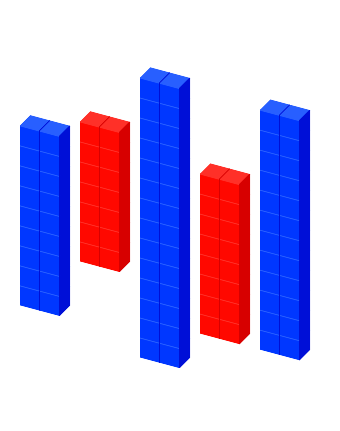The world of day trading has changed a lot with remote prop trading firms. These companies offer powerful platforms and capital that were once only for big investors. This has opened up new ways for traders to get into the financial markets.
Remote prop trading firms give day traders special chances to use professional tools and get big capital. They can do this all from their home offices. This means traders can work without the usual job limits.
Finding the right remote prop trading firm is key to a trader’s success. It’s important to know the differences between these companies. This helps ambitious day traders reach their full potential in today’s fast-changing financial world.
Key Takeaways
- Remote prop trading offers unprecedented market access for independent traders
- Advanced technological platforms are critical for successful day trading
- Comprehensive capital and risk management resources distinguish top firms
- Flexible trading environments enable global market participation
- Professional support and educational resources enhance trader development
Understanding Proprietary Trading and Remote Operations
The world of financial trading has changed a lot. Now, we have remote trading firms and proprietary trading companies. These new platforms have changed how traders work, breaking down old barriers and opening up new chances for skilled people.
Proprietary trading is a special way of trading. Firms use their own money to make profits. They use new tech and smart strategies to get the best results.
The Evolution of Remote Trading
New tech has made remote trading grow fast. Today, trading firms offer traders a lot of flexibility. They can trade from anywhere with internet, use top-notch platforms, and have the latest tools.
Key Benefits of Prop Trading
Remote trading firms give traders big advantages. They offer:
- Big trading capital without personal risk
- Training and mentorship
- Top tech resources
- Pay based on how well you do
Remote vs Traditional Prop Trading
Remote and traditional prop trading are now very different. Remote trading lets traders work from anywhere. They can still do great work, no matter where they are.
The future of trading is digital, decentralized, and driven by innovative remote trading firms.
Now, traders can use the latest tech and global info. They don’t have to deal with old trading places. This is a big change in how we trade.
Essential Requirements for Remote Prop Trading Success
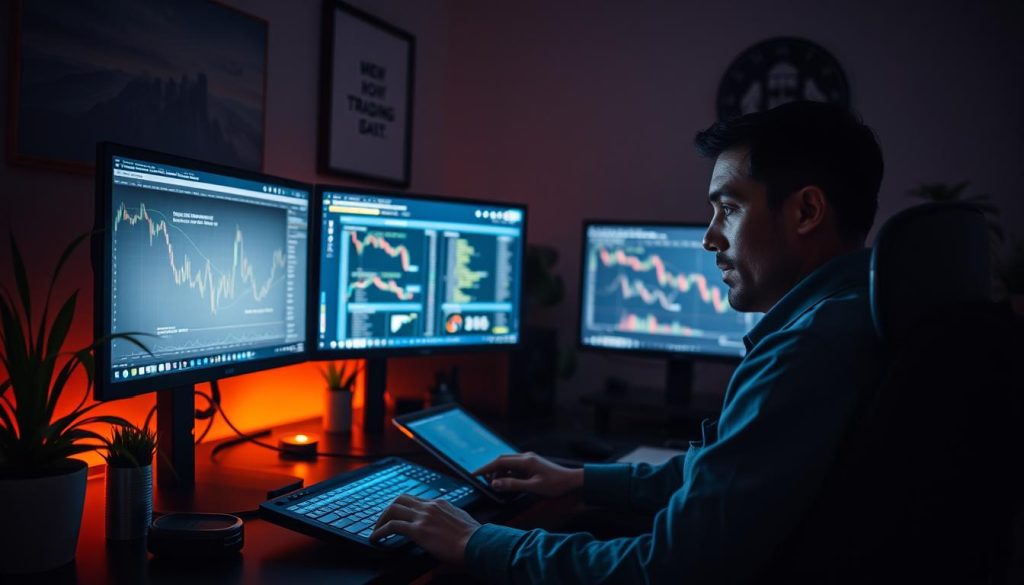
To succeed in remote prop trading, you need technical skills, mental toughness, and a solid plan. Trading firms look for traders who can do more than just trade.
Key skills for remote prop traders include:
- Advanced technical analysis skills
- Strong risk management
- Good mental discipline
- Ability to make decisions on your own
Having the right tech is key for remote trading. Trading software providers say you should invest in top-notch gear to trade better.
| Requirement Category | Essential Components |
|---|---|
| Hardware | Fast computer, multiple screens, stable internet |
| Software | Top charting tools, live data, analysis software |
| Skills | Market analysis, quick thinking, emotional control |
Learning never stops in remote prop trading. Top traders keep learning, stay updated, and improve their tactics. Having a growth mindset is what sets them apart.
“Success in remote prop trading is 20% technical skill and 80% mental discipline.” – Professional Trader
Trading firms want traders who can perform well, adapt, and have technical know-how. Meeting these needs can lead to big success in this fast-changing market.
Leading Remote Prop Trading Firms in 2024
The world of remote prop trading is changing fast. New algorithmic trading firms are leading the way with digital trading strategies. Traders looking for the best now have many top platforms to pick from.
Evaluation Criteria for Elite Firms
To judge the best remote prop trading firms, we look at several key areas:
- Technology infrastructure quality
- Trader funding programs
- Profit-sharing mechanisms
- Trading platform sophistication
- Risk management protocols
Top Performers Spotlight
The top remote prop trading firms excel in helping traders succeed. They offer:
- Advanced algorithmic trading tools
- Comprehensive trader education
- Flexible trading capital structures
- Global market access
| Firm | Funding Range | Profit Split | Platform Specialization |
|---|---|---|---|
| TopTier Trading | $50K-$500K | 80/20 | Futures & Forex |
| Maverick Trading | $25K-$250K | 85/15 | Equities |
| Swift Trading | $10K-$100K | 90/10 | Algorithmic Strategies |
Industry Recognition Highlights
Top remote prop trading firms stand out with new ideas, tech, and trader wins. They focus on growing traders while keeping risks low.
Success in remote prop trading depends on selecting a firm that aligns with your individual trading goals and risk tolerance.
Funding Models and Profit-Sharing Structures
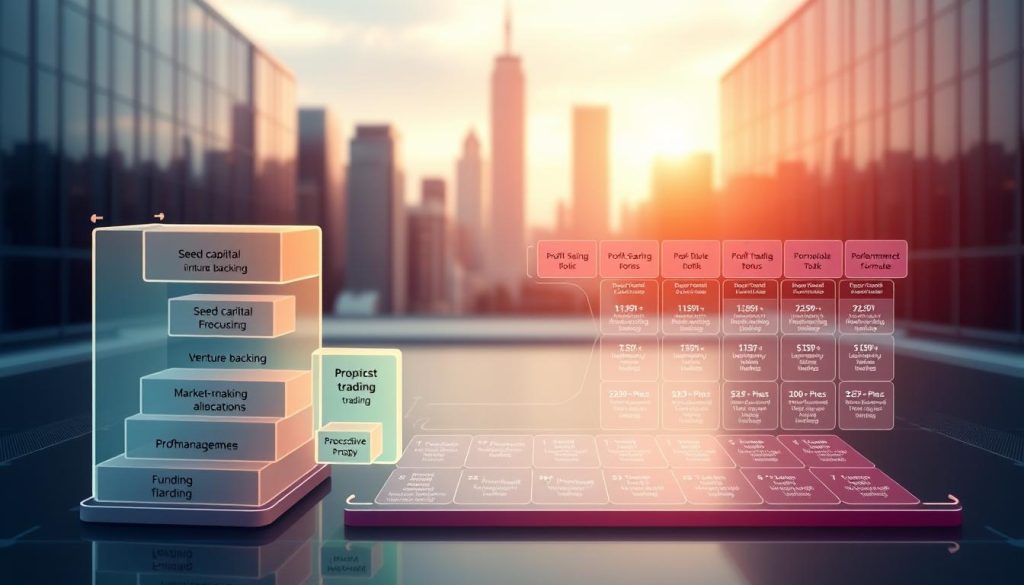
Understanding the financial side of proprietary trading companies is key. Remote trading firms have different ways to help traders reach their financial goals. Each method can greatly affect how much a trader can earn.
Traders looking into proprietary trading opportunities will find several funding models:
- Challenge-Based Funding: Traders must show their skills by meeting certain performance goals
- Instant Funding: Traders get trading capital right away, but with certain conditions
- Scaling Plans: More capital is given as traders perform well consistently
Profit-sharing structures vary a lot among remote trading firms. They usually offer payouts between 50% and 90% to traders. These payouts depend on several things:
| Factor | Impact on Profit Split |
|---|---|
| Account Size | Bigger accounts get higher percentage splits |
| Trading Performance | Good performance can lead to better profit-sharing deals |
| Risk Management | Following the firm’s risk rules affects profit sharing |
It’s important for traders to understand these funding models well. This knowledge helps them make the most of proprietary trading. By carefully looking at each firm’s terms, traders can find big chances for growth and learning.
Technology Infrastructure and Trading Platforms
Modern remote prop trading needs advanced technology. Trading software providers are key in offering strong automated trading solutions. These tools help day traders execute strategies quickly and accurately.
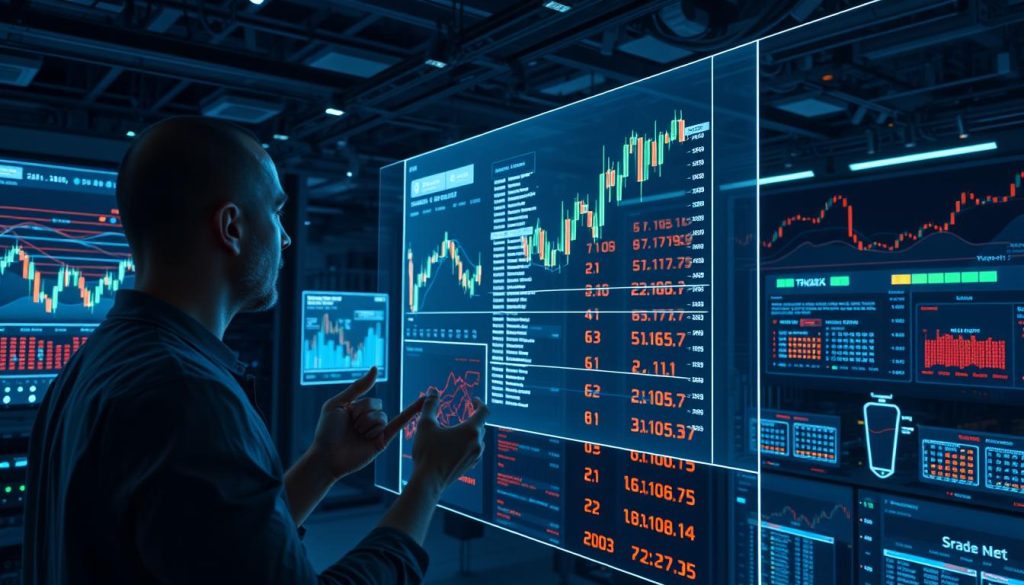
Successful traders know that the latest technology is crucial. It allows for smooth trading, fast data analysis, and smart decisions.
Platform Features Comparison
Trading platforms have unique features to boost trader productivity. Important aspects to look at include:
- Execution speed and reliability
- Real-time market data feeds
- Advanced charting capabilities
- Risk management tools
Technical Requirements
For top performance in remote prop trading, specific tech specs are needed:
| Component | Minimum Requirements | Recommended Specifications |
|---|---|---|
| Processor | Intel i5 | Intel i7/i9 or AMD Ryzen 7 |
| RAM | 8GB | 16GB or 32GB |
| Internet | 50 Mbps | 100+ Mbps, Low Latency |
Software Integration Options
Today’s automated trading solutions have wide integration options. Traders can link various tools, such as:
- Third-party charting software
- News aggregation platforms
- Advanced analytics engines
- Risk management systems
Choosing the right tech infrastructure is vital for traders aiming for steady success in remote prop trading.
Risk Management Protocols and Trading Rules
Prop trading is complex and needs strong risk management. High-frequency and systematic trading firms use advanced strategies to protect traders and their money. Knowing these risk management plans is key to trading success.
Good risk management starts with clear rules for trading. Traders must follow strict rules to avoid big losses and keep performance steady. These rules often include:
- Position sizing limits
- Maximum daily drawdown thresholds
- Strict stop-loss requirements
- Leverage restrictions
The best prop trading platforms have strong risk control. This protects both traders and the firm’s money. Systematic trading firms focus on algorithmic risk to make trading more predictable.
| Risk Management Parameter | Typical Range | Purpose |
|---|---|---|
| Daily Loss Limit | 1-3% of total capital | Prevent significant account depletion |
| Maximum Leverage | 5:1 to 10:1 | Control potential losses |
| Overnight Position Restrictions | Limited or prohibited | Reduce overnight market risk |
Traders should see these rules as important, not obstacles. High-frequency trading firms use complex risk models to watch the market and trader performance. By understanding and following these rules, traders can create lasting and profitable strategies.
Success in prop trading comes from balancing risk management and trading chances. Traders who get good at these rules are set for long-term success in proprietary trading.
Trading Capital and Account Scaling Opportunities
Remote prop trading firms give traders a chance to get big trading capital. They help traders grow their accounts by performing well and improving their skills. This is a great way to increase what they can earn.

It’s important to know how trading capital works. We need to look at key parts that help traders succeed in remote prop trading.
Initial Capital Requirements
Most remote prop trading firms have rules to check if traders are ready:
- Minimum initial evaluation fees ranging from $150-$500
- Proof of trading consistency and risk management skills
- Comprehensive trading challenge assessments
Growth Potential and Scaling Models
Traders can get more capital if they perform well. Proprietary trading companies give more account size based on:
- Consistent profitability
- Adherence to risk management protocols
- Demonstrated trading discipline
Performance Metrics
Traders are checked with advanced tracking. This includes:
- Profit factor calculations
- Maximum drawdown limits
- Risk-adjusted return measurements
Knowing how to scale is key. Traders can then do well in the competitive world of remote prop trading. They can reach their full financial potential.
Education and Support Resources
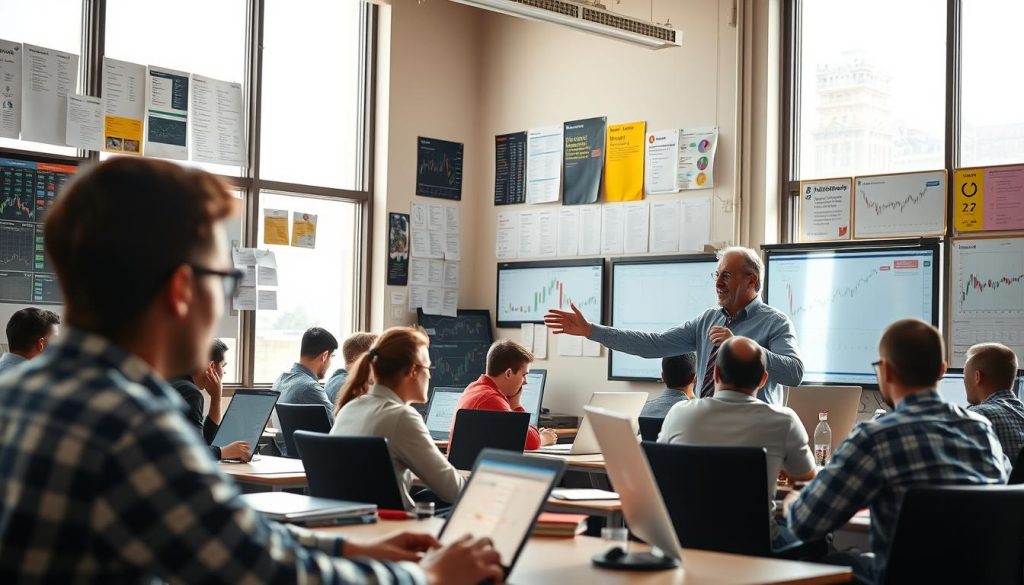
Successful traders know that learning never stops. This is key in algo trading companies. Remote trading firms offer detailed educational systems for all skill levels.
Top remote trading firms provide more than just training. They offer:
- Interactive online training modules
- Live webinar sessions with experienced traders
- Personalized mentorship programs
- Advanced trading strategy workshops
- Real-time market analysis resources
Professional development is key for traders aiming to stand out. The best algo trading companies focus on learning platforms. These platforms mix theory with real trading experiences.
Traders get support for all learning needs:
- Beginner-level foundational courses
- Intermediate strategy development programs
- Advanced algorithmic trading techniques
- Technical platform mastery workshops
Technical support is also vital. Remote trading firms offer live chat, email help, and knowledge bases. This ensures traders can solve platform issues fast.
“Continuous learning is not just an option—it’s a requirement for sustainable trading success.”
By focusing on education and support, top remote trading firms help traders grow. They can keep improving, adapt to market changes, and reach their full potential.
Algorithmic and Quantitative Trading Options
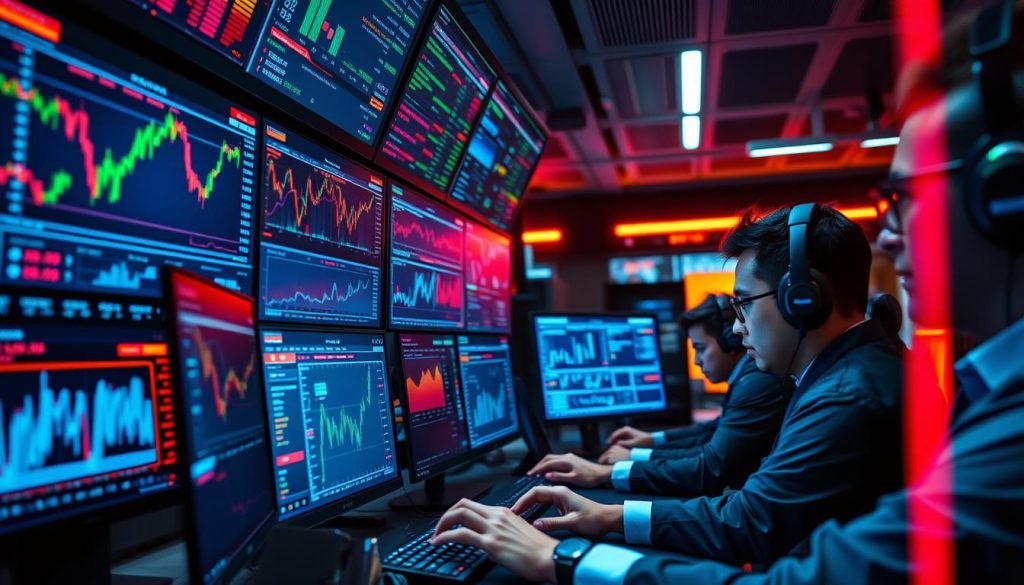
The world of trading has changed a lot thanks to algorithmic and quantitative trading firms. These firms offer advanced tools for traders to create and use complex strategies.
Algorithmic trading uses technology to make trades fast and accurate. Quantitative trading firms have changed how traders analyze markets and create strategies.
Strategy Development Toolkit
Good algorithmic traders use detailed tools for strategy development. These tools include:
- Advanced backtesting engines
- Real-time market data integration
- Multi-language programming support
- Historical price data repositories
Automation Capabilities
Quantitative trading firms have strong automation platforms. These platforms help traders turn complex strategies into working algorithms. They support many programming languages and have easy API connections.
| Feature | Advanced Platforms | Standard Platforms |
|---|---|---|
| Programming Languages | Python, R, C++ | Python, Basic |
| Backtesting Depth | 10+ Years Historical Data | 3-5 Years Historical Data |
| API Connectivity | Multiple Exchanges | Limited Exchanges |
Traders aiming to do well in algorithmic trading need to learn about these advanced tools. The right platform can turn complex math into winning trading strategies.
Compliance and Regulatory Considerations

For systematic trading firms and proprietary trading companies, understanding the complex rules is key. Traders need to grasp the legal frameworks that control financial markets and trading.
Compliance covers important areas to protect traders and financial institutions:
- Anti-Money Laundering (AML) Policies
- Know Your Customer (KYC) Requirements
- Trade Reporting Obligations
- Securities Exchange Regulations
Systematic trading firms must follow strict rules from bodies like the Securities and Exchange Commission (SEC) and Financial Industry Regulatory Authority (FINRA). These groups make rules to keep the market fair and safe for investors.
| Regulatory Body | Primary Focus | Key Responsibilities |
|---|---|---|
| SEC | Market Oversight | Enforcing federal securities laws |
| FINRA | Broker-Dealer Regulation | Protecting investor interests |
| CFTC | Derivatives Markets | Regulating commodity futures trading |
International traders face more challenges due to different rules in each place. Proprietary trading companies must carefully navigate these legal landscapes to ensure compliance across multiple markets.
Traders should focus on:
- Local and international trading regulations
- Reporting and documentation requirements
- Ethical trading practices
- Risk management protocols
“Compliance is not just a legal obligation, but a fundamental aspect of professional trading.” – Financial Regulatory Expert
Successful systematic trading firms have strong compliance programs. They keep up with changing rules to protect the firm and its traders from legal issues.
Trading Markets and Asset Classes Available
Remote prop trading firms have changed how traders access global markets. These platforms offer new chances to explore different assets and international markets.
High-frequency trading firms have opened up new trading areas. They give traders access to many markets and advanced trading tools. The number of available markets has grown a lot in recent years.
Global Market Reach
Traders can now reach markets all over the world with advanced remote prop trading firms. They can access:
- North American exchanges
- European financial markets
- Asian trading platforms
- Emerging market exchanges
Instrument Diversity
Modern remote prop trading firms offer a wide range of trading tools. These include:
- Stocks from global exchanges
- Futures contracts in commodities and finance
- Foreign exchange (Forex) markets
- Cryptocurrency trading pairs
- Options and derivatives
The wide range of markets lets traders create complex, varied strategies. These strategies can adjust to changes in the global economy.
Successful traders use the full market access from top remote prop trading firms to reach their full potential.
Application Process and Evaluation Methods
Applying to remote trading firms needs careful planning and knowing how they evaluate candidates. Traders must show their skills through special challenges. A guide to prop firm evaluations offers valuable tips for success.
Remote trading firms use several steps to check a trader’s skills and how they handle risks. Trading software providers have strict tests to find the best traders.
- Initial Assessment Phase: Traders do a simulated trading challenge
- Profit and consistency are closely looked at
- Risk management skills are very important
- Following specific trading rules is a must
To succeed, traders need discipline and smart thinking. Remote trading firms want traders who perform well in different market situations. The evaluation includes:
- Meeting a minimum profit target
- Keeping drawdowns within limits
- Following set trading rules
- Showing good risk management
Traders should prepare well, knowing each firm has its own criteria. A strong trading plan, emotional control, and technical skills are crucial for passing these tests.
Conclusion
The world of remote prop trading firms is changing fast. It offers new chances for day traders to find exciting ways to invest. New automated trading tools have made it possible for traders to use advanced technology and smart strategies. These were not available before in regular trading settings.
Choosing the right remote prop trading firm is important. Traders need to look at several key things. They should check the funding models, tech setup, risk management, and educational support. This helps them do their best.
Prop trading is getting even more advanced. New tech will help traders make better, data-based choices. As these firms improve their platforms, traders will get better tools. These tools will help them make smarter decisions and improve their performance.
Day traders starting out should be careful and keep learning. They need to understand the world of remote prop trading firms. By using the latest technology, they can grow their money and develop their skills in this fast-changing market.
